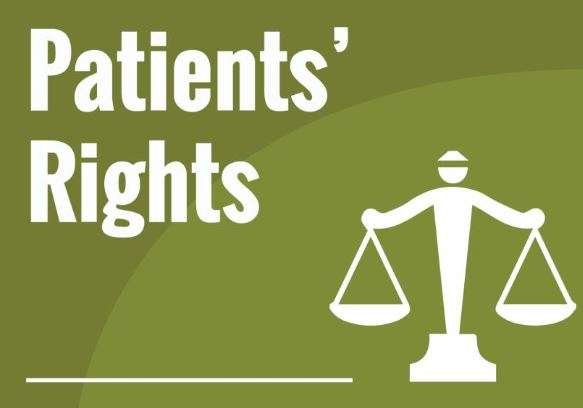Understanding Patient Rights: A Medical Lawyer’s 6-Step Guide
In the complex world of healthcare, patient rights play a pivotal role in ensuring that individuals receive proper care, treatment, and respect from medical professionals. Medical lawyers, with their expertise in healthcare law, are essential in safeguarding these rights. This guide presents a comprehensive 10-step overview of understanding patient rights from a medical lawyer’s perspective.

Introduction
When you’re a patient seeking medical care, it’s crucial to be aware of your rights. These rights not only empower you as a patient but also establish a framework for ethical and respectful medical practice. A medical lawyer specializes in ensuring these rights are upheld, offering legal guidance and support when they’re compromised.
The Importance of Patient Rights
Patient rights are the foundation of a just and equitable healthcare system. They enable patients to make informed decisions about their health, maintain control over their medical information, and receive treatment with dignity. Medical lawyers advocate for patients, making sure that their rights are respected throughout their healthcare journey.
Step 1: Informed Consent
Informed consent is a cornerstone of patient rights. Before any medical procedure or treatment, healthcare providers must explain the potential risks, benefits, and alternatives to the patient. A medical lawyer ensures that patients are fully informed and provide their consent voluntarily.

Step 2: Right to Medical Information
This empowers them to understand their health conditions and make informed choices. Medical lawyers assist patients in exercising this right and ensuring the accuracy of their medical information. Understanding Patient Rights: A Medical Lawyer’s 6-Step Guide

Step 3: Privacy and Confidentiality
Medical information is sensitive, and patients have the right to keep it confidential. Medical lawyers work to protect patient privacy, ensuring that personal health information is not disclosed without proper authorization. Understanding Patient Rights: A Medical Lawyer’s 6-Step Guide
Step 4: Right to Refuse Treatment
Patients can refuse medical treatment, even if it’s recommended by healthcare professionals. Medical lawyers help patients assert this right while ensuring they understand the potential consequences of their decision. Understanding Patient Rights: A Medical Lawyer’s 6-Step Guide
Navigating Medical Malpractice: 10 Insights from a Medical Lawyer
Step 5: Dignity and Respect
Medical lawyers advocate for patients who experience discrimination or disrespectful treatment during their medical care.
Step 6: Access to Medical Records
Patients can request copies of their medical records, enabling them to monitor their health history and make informed decisions. Medical lawyers assist patients in obtaining their records promptly and accurately.

Step 7: Right to Second Opinion
Patients have the right to seek a second opinion from another healthcare provider. Medical lawyers facilitate this process, helping patients navigate conversations with their primary provider and the second opinion specialist.

Step 8: Advance Directives
Advance directives allow patients to outline their medical wishes in advance, especially in situations where they can’t communicate their preferences. Medical lawyers help patients create legally binding advance directives that reflect their choices. Understanding Patient Rights: A Medical Lawyer’s 6-Step Guide
Step 9: Complaints and Grievances
Patients can voice their complaints and grievances regarding their medical treatment. Medical lawyers guide patients through the process of filing complaints with appropriate medical boards or regulatory authorities. Understanding Patient Rights: A Medical Lawyer’s 6-Step Guide
Step 10: Legal Recourse
When patient rights are violated and harm occurs, legal recourse may be necessary. Medical lawyers represent patients in legal actions, seeking justice and compensation for any wrongdoing. Understanding Patient Rights: A Medical Lawyer’s 6-Step Guide
Conclusion (Understanding Patient Rights: A Medical Lawyer’s 6-Step Guide)
Understanding patient rights is vital for anyone seeking medical care. With the guidance of medical lawyers, patients can navigate the complex landscape of healthcare while ensuring their rights are upheld and respected. Understanding Patient Rights: A Medical Lawyer’s 6-Step Guide

FAQs (Understanding Patient Rights: A Medical Lawyer’s 6-Step Guide)
Q1: Can I refuse treatment even if my doctor recommends it?
A: Yes, you have the right to refuse treatment, but it’s important to understand the potential consequences of your decision. Understanding Patient Rights: A Medical Lawyer’s 6-Step Guide
Q2: How can I access my medical records?
A: You can request copies of your medical records from your healthcare provider. A medical lawyer can assist you in this process. Understanding Patient Rights: A Medical Lawyer’s 6-Step Guide
Q3: What are advance directives?
A: Advance directives are legal documents that outline your medical preferences in advance, ensuring your wishes are followed even if you can’t communicate. Understanding Patient Rights: A Medical Lawyer’s 6-Step Guide
Q4: What should I do if I feel my patient rights are violated?
A: Contact a medical lawyer who specializes in patient rights. Understanding Patient Rights: A Medical Lawyer’s 6-Step Guide
Q5: How can a medical lawyer help me in case of medical malpractice?
A: A medical lawyer can assess your case, gather evidence, and represent you in legal proceedings if medical malpractice has occurred. Understanding Patient Rights: A Medical Lawyer’s 6-Step Guide








